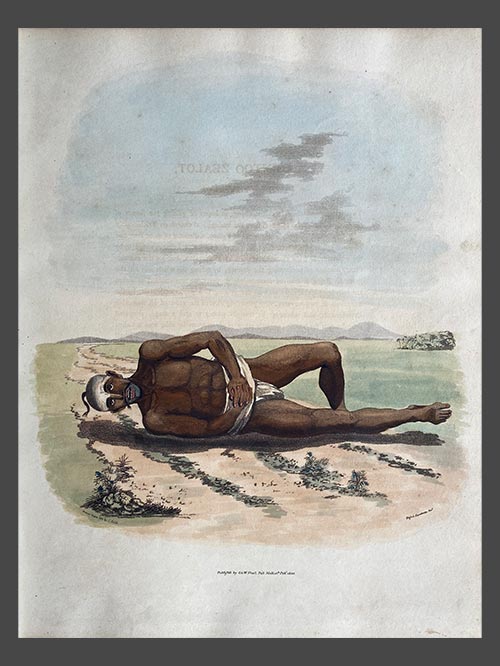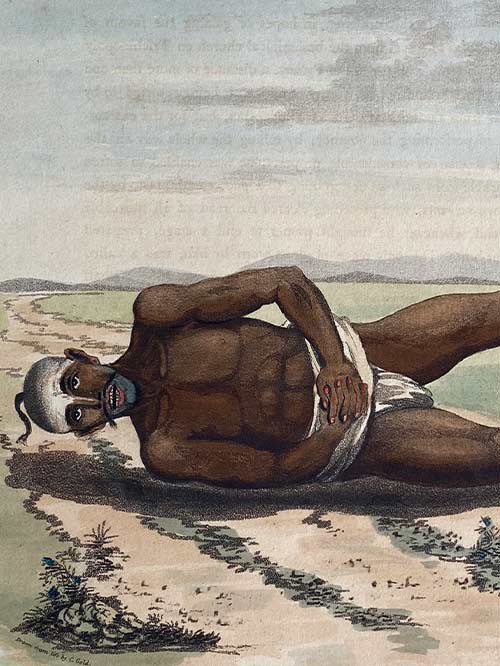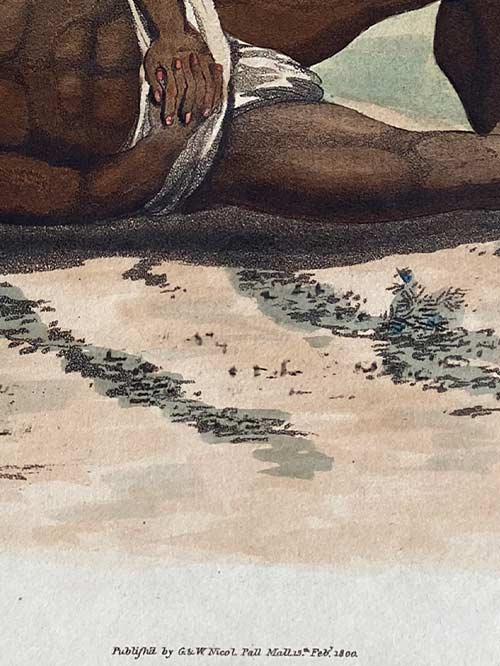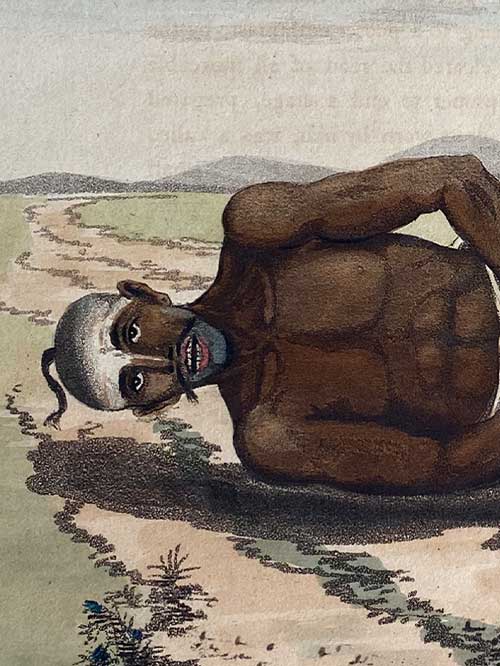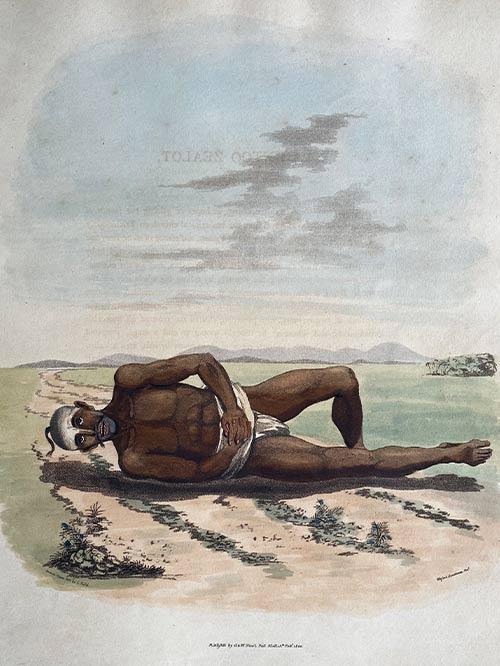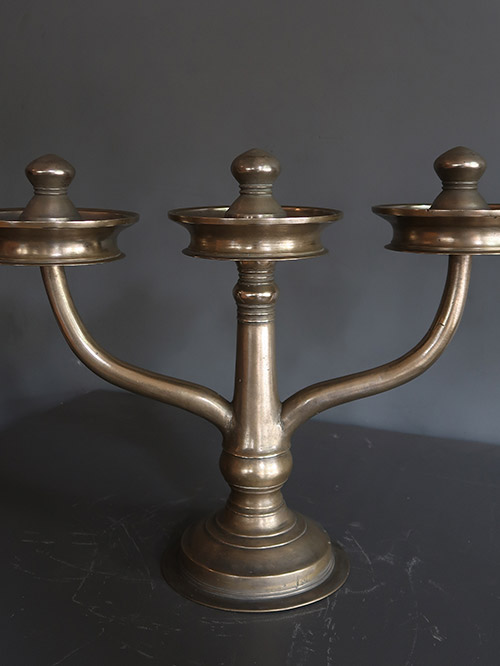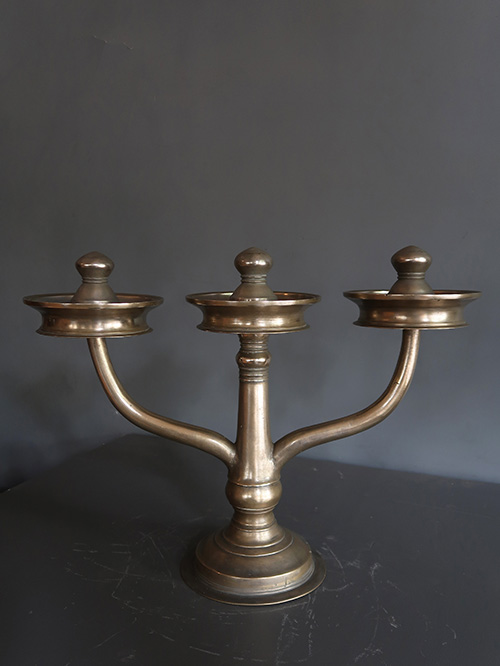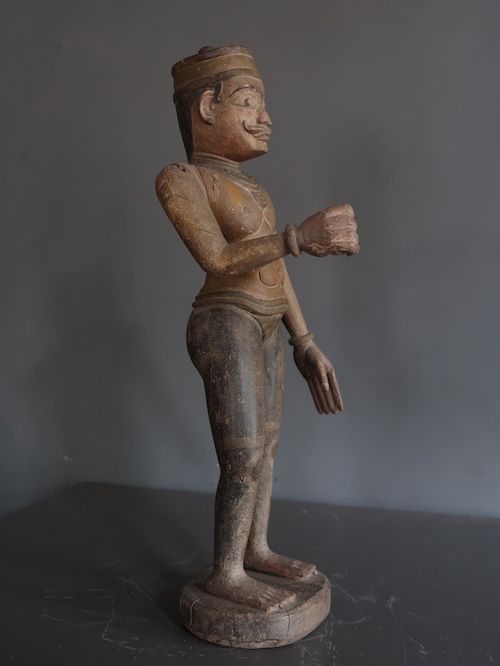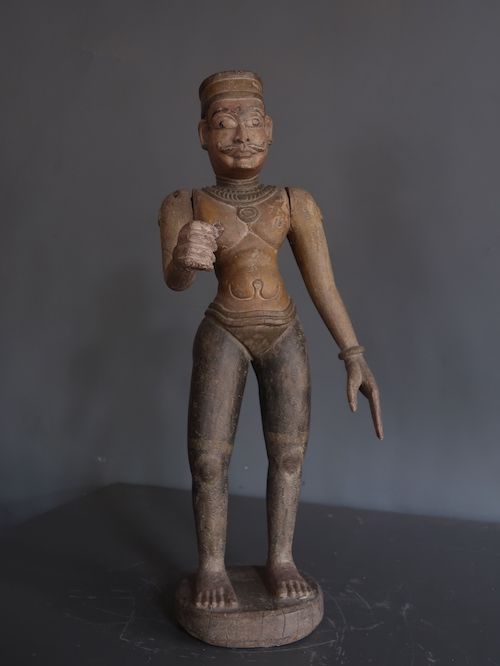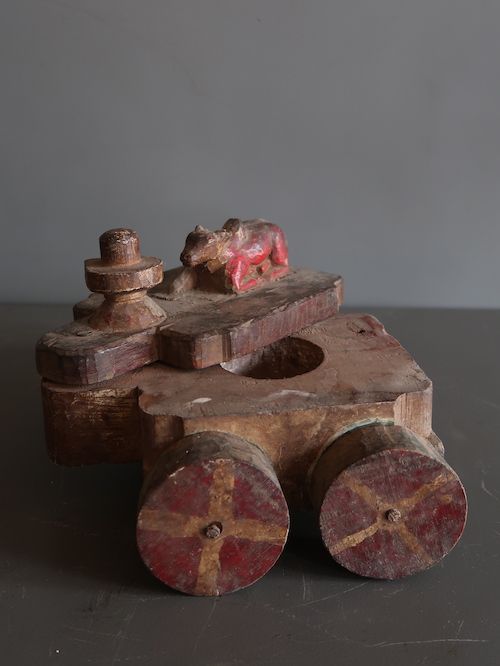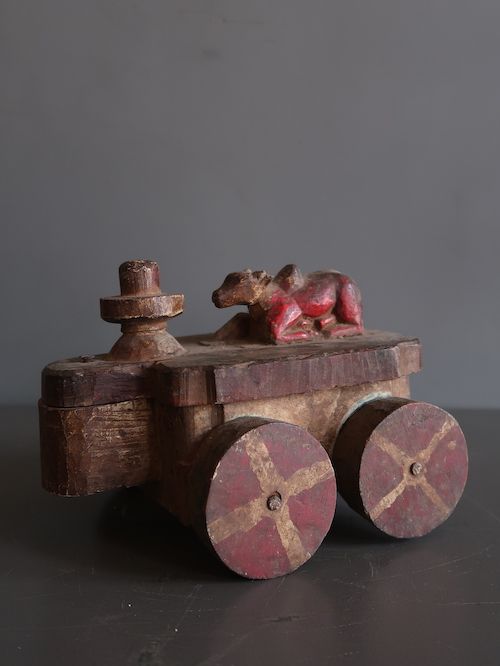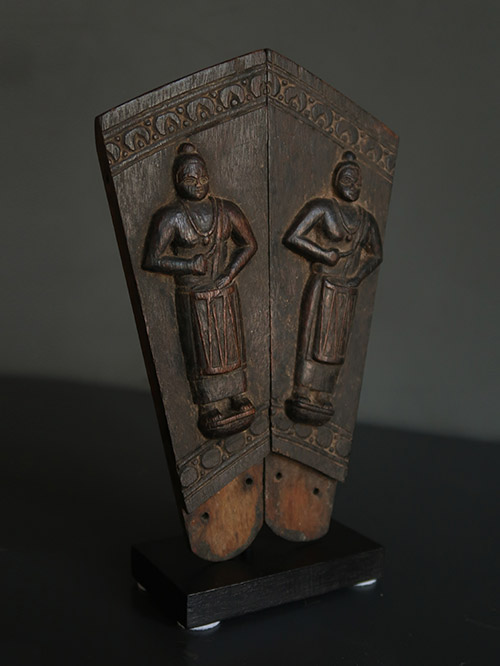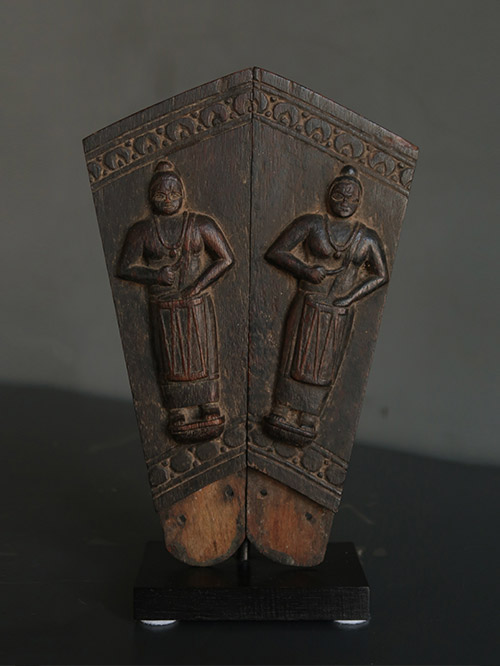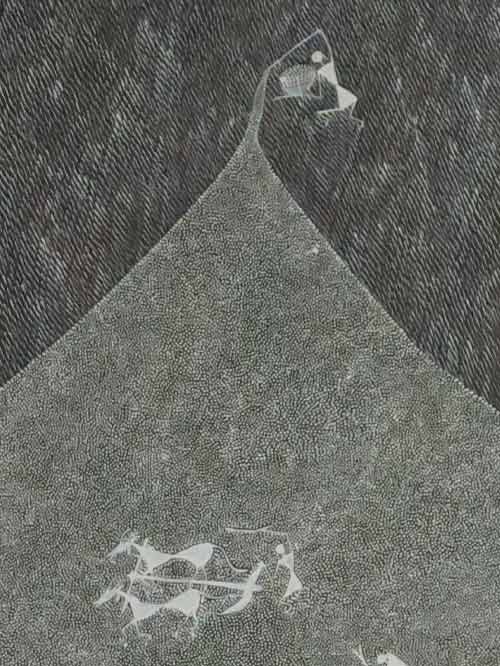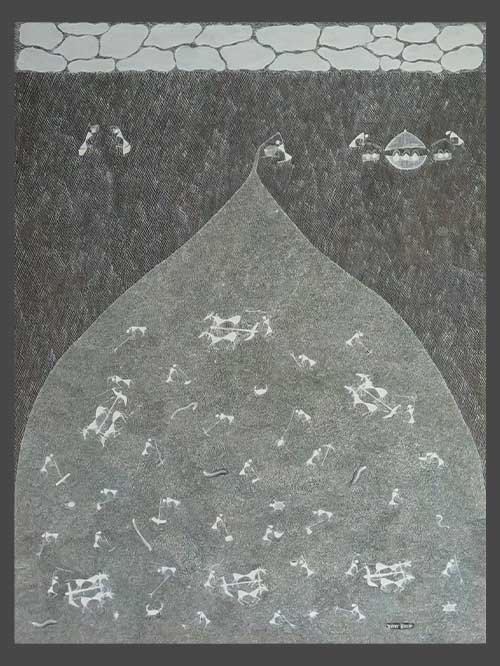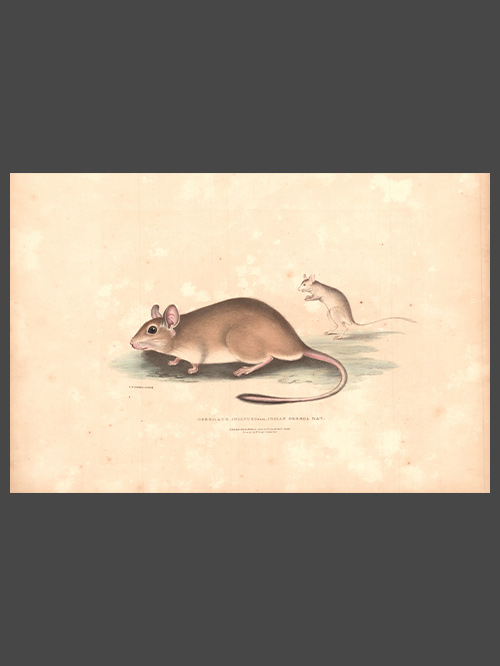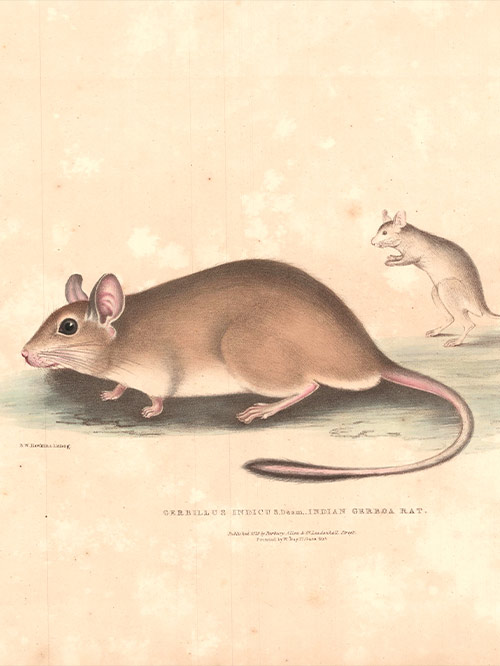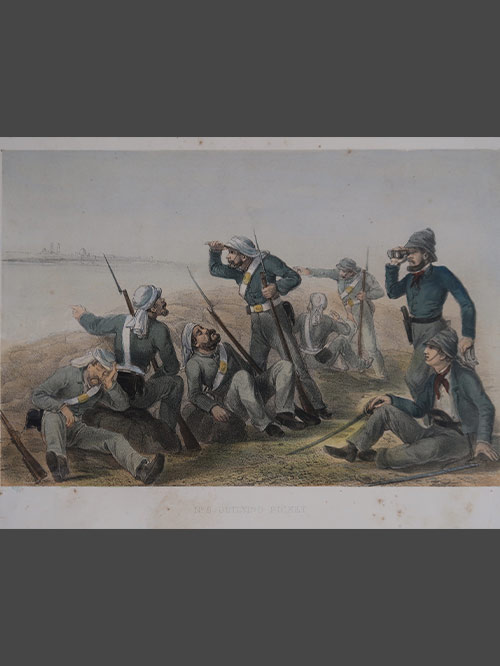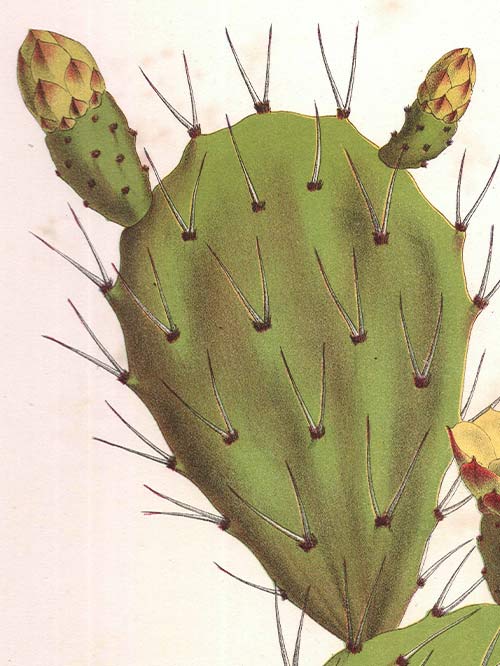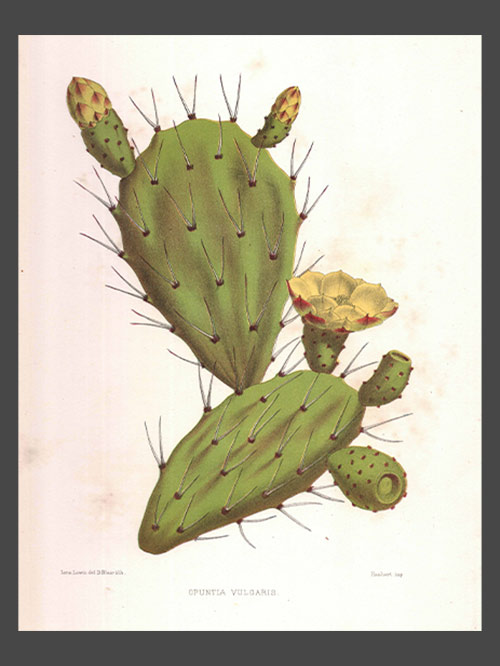Pub. London
original hand-coloured aquatint
Captain Charles Gold (d. 1842) served in the military campaigns against Tipu Sultan, the ruler of the Kingdom of Mysore and during 1791-98 he sketched a series of images later published as aquatints in “Oriental Drawings.” He was fascinated with the concept of religious begging and documented all manners of mendicants and zealots that he met on his travel, often detailing their unique trials and tribulations.While these prints cannot be divorced from the orientalist roots from which they came, they are a compelling visual memoir of a time and people that may have otherwise been lost to time.
The artist remarked on his encounter with this “Gentoo Zealot,” who was “rolling through the fort of Trichinopoly, in the exact posture this drawing represents, and singing, or rather crying aloud, the praises of his God. The person represented in this drawing, in hopes of gaining the favour of his God, had resolved to travel from the brahminical church on Trichinopoly rock, to the famous temple on the hill of Pylney, a distance of more than one hundred miles, performing the journey, by rolling the whole way on the ground. Being a man of considerable property, he was enabled to soften the toils inseparable from such an undertaking, by the attentions of two servants, who preceding cleared the road of all moreable impediments, and whenever he thought proper to end a stage, prepared refreshments for him. The only piece of dress worn by him, was a calico cloth wrapped about the waist ; his hair was close shaved excepting a small lock on the back part of the crown, and his head entirely exposed to the influence of the sun and reflected heat from the ground, which it nearly touched every revolution he made.”
Size (cms): 33(H) x 25(W)
Size (inches): 13(H) x 10(W)

